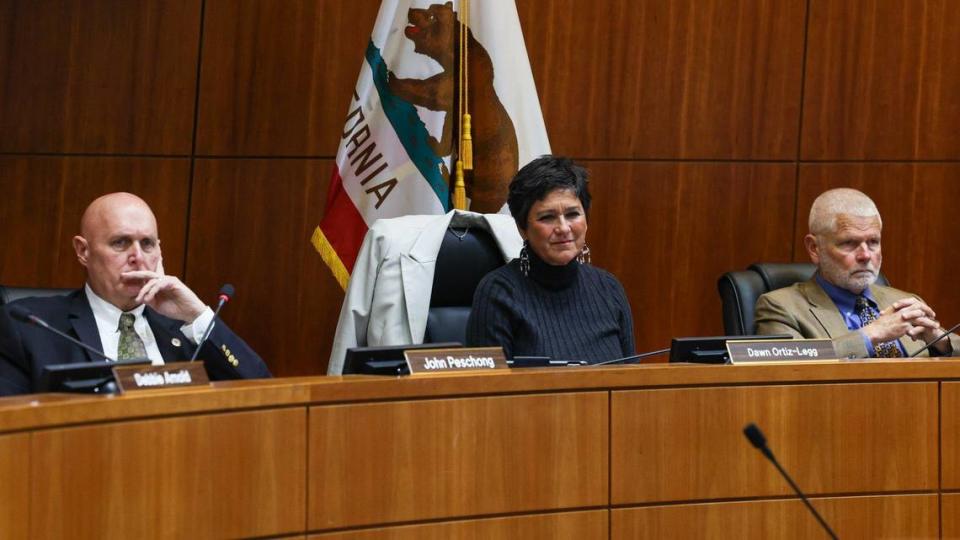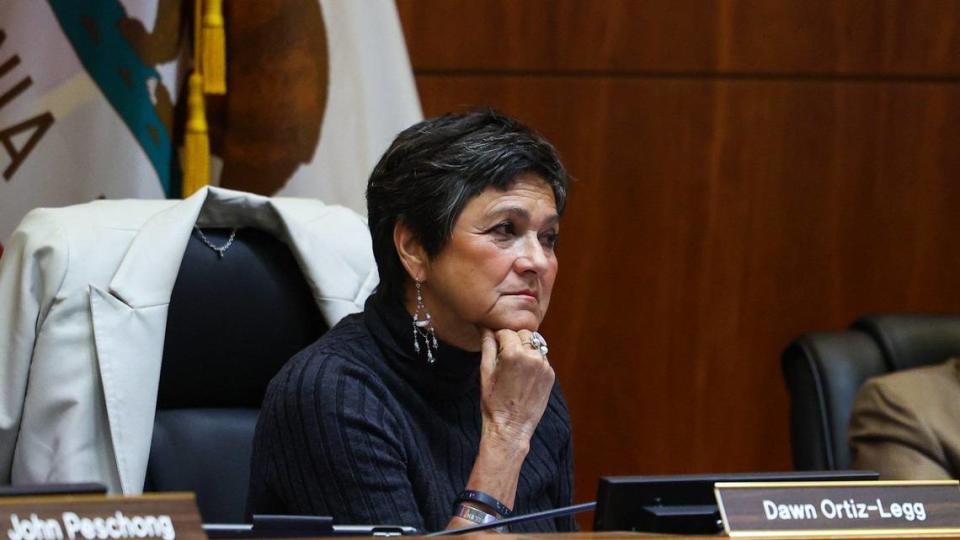
Here’s some good news — finally — for the struggling local cannabis industry.
At its June 20 meeting, the San Luis Obispo County Board of Supervisors voted 4-1 to lower the county’s cannabis business tax rate by 2 percentage points.
On July 1, the tax will decrease from 8% to 6% — and stay there until July 2024.
The tax, combined with fees for inspections, permits, background checks and license renewals, makes it difficult for cannabis business owners to pay their bills, according to county Supervisor Dawn Ortiz-Legg.
By not cutting taxes, “We could be killing this industry,” Ortiz-Legg said at the June 20 meeting.
Supervisor Debbie Arnold cast the lone dissenting vote at the meeting, noting that the cannabis business tax already doesn’t cover the county’s costs for regulating the cannabis industry — which range from processing permits to paying San Luis Obispo County Sheriff’s Office deputies to conduct on-site inspections.
Lowering the tax means the county general fund will have to pick up the difference, she said June 20.
“We shouldn’t be asking the other voters and taxpayers to be subsidizing anybody’s small, private business,” Arnold said.
Ortiz-Legg, however, said that lowering the tax could increase the county’s revenue over time.
Continuing to raise the tax could be so burdensome on cannabis businesses that they shut down or move to counties with lower taxes, she said. Reducing the tax would relieve pressure on businesses, allowing them to make a larger profit and eventually pay more taxes to the county, according to Ortiz-Legg.
“Without having a thriving industry, we’ll never recoup our investment,” Ortiz-Legg said. “We do want to have an industry that is able to survive and thrive and bring us some revenues.”
At the June 20 meeting, Supervisor John Peschong enthusiastically supported the tax cut.
“I love the fact that we’re debating a tax cut, I just love it,” Peschong said. “Whatever industry it is, cut taxes.”

What is the cannabis business tax?
In 2018, 76% of SLO County voters passed Measure B-18, which created a 4% tax on the gross receipts of each cannabis business in unincorporated areas of the county, according to the staff report.
Cannabis businesses including nurseries, cultivators, distributors, manufacturers and retailers must pay the tax each month.
Starting in 2020, the tax automatically increased by 2 percentage points each year with a cap of 10%, SLO County auditor controller Jim Hamilton said at the June 20 meeting.
Even though the ballot measure set a schedule for how and when the tax would increase, the board is allowed to freeze the tax or reduce it to as low as 4%, county counsel said at the meeting.
On June 25, 2021, the board voted to pause the 2-point increase and hold the tax at 6%, according to the staff report. Then, in July 2022, the tax increased as planned to 8%.
On July 1, the tax was scheduled to increase from 8% to its cap of 10%, Hamilton said.
If the board had allowed the tax to climb to 10%, the county would have made about $645,000 in taxes on cannabis businesses, according to the staff report.
Lowering the tax to 6% will produce less revenue for the county, projected to generate $387,000 over the next year, Hamilton told The Tribune after the meeting.
Without further action from the board, the cannabis business tax will jump to 10% on July 1, 2024.

Cannabis business owners say industry is struggling
On June 20, cannabis business owner Justin Carlson urged the board to lower the tax to 4% — or suspend it altogether.
According to Carlson, SLO County’s unincorporated areas had 144 cannabis growers at one point. Now, there are only 13, he said, and it’s up to those businesses to cover the county’s enforcement costs.
“The county has lost millions of dollars. The growers have lost millions of dollars,” Carlson said. “We have to be successful in order for the county to be successful.”
On top of substantial fees and taxes, cannabis businesses are struggling to cope with a market crash, Carson said.
“This is the lowest prices we’ve ever seen in cannabis history last year,” he said. “We don’t know where we’re going to be left, but the industry needs a chance to level out.”
Sean Bean has owned a cannabis company in SLO County since 2017. A variety of taxes, including the cannabis business tax and sales taxes, leave him with limited profits, he said.
“We’re pretty much choked out at this point,” Bean said.

Cannabis tax doesn’t cover SLO county’s cost of service
From July 2022 to June 2023, cannabis businesses paid SLO County almost $600,000 in taxes, Hamilton told the Tribune.
That wasn’t enough funding to cover the county’s cost of managing the industry, Hamilton said, though the county doesn’t yet have an exact number for how much money it spent on cannabis regulation and enforcement.
Those county’s costs include paying the Sheriff’s Office for background checks and regular property inspections, county staff for processing permits, and more, according to a 2022 staff report.
“In many counties, the cannabis tax covers whatever their costs are,” Hamilton said at the meeting.
Peschong pointed out that neighboring counties grow more cannabis, which would generate more tax revenue.
SLO County has only 19 productive acres of cannabis, according to SLO County principal financial analyst Justin Cooley.
In contrast, Santa Barbara County has about 1,500 productive acres of cannabis, Peschong said.
SLO County Supervisor Bruce Gibson said hefty fees and regulations have stunted the cannabis industry’s growth.
“We have constructed a regulatory framework for cannabis that is not friendly to the industry,” he said at the June 20 meeting. “I absolutely hear the cannabis industry, and your struggles in this county have come from an approach that the Board of Supervisors has taken over the years that might be characterized somewhere between uncaring and hostile.”
Even though the industry is struggling, Gibson didn’t think the cost of managing the industry should “be borne by the general taxpayer,” he said.
Ortiz-Legg said the county needs to relieve pressure on cannabis businesses so they can make a profit for the county to tax.
“We’ve got to keep these guys alive,” Ortiz-Legg said. “We’re going to get zero from zero if we don’t do something.”
SLO County Supervisor Jimmy Paulding said the board must balance the needs of the cannabis industry and the county’s need for tax revenue to regulate it.
At the June 20 meeting, he asked one key question about the tax: “Will it generate revenue to cover the cost of services?”
“We need real numbers. We need to know what the extent of the damage is,” Paulding said. “We need to ensure as an organization that we are fiscally responsible.”
After discussing options of setting the tax at 4%, 5% or 6%, the board eventually voted to set the cannabis business tax rate at 6%.
Arnold didn’t agree with using the county’s general fund to pay for regulation and enforcement of the industry.
“We set up the tax as a means to recover our costs,” Arnold said. “Anything else is going to be taxpayer subsidy to one particular industry, and that’s why I’m not supporting it.”
Also on June 20, the board voted unanimously to direct county staff to present an analysis on cannabis-related items such as fees, county costs and options for the cannabis business tax in September during the fourth quarter financial report.


Recent Comments